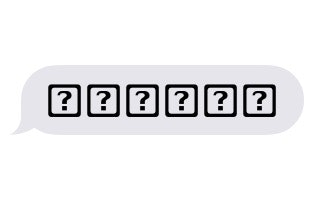

It is not clear what prompts their arrangement. Though their Bibles vary somewhat, they may include: the prayer of Manasseh, Psalm 151, 1 and 2 Esdras, and 3 and 4 Maccabees. The Bibles of the Eastern Orthodox churches also include these additional books, but they contain still other books, also a part of the Septuagint. The book of Baruch, the secretary of Jeremiah, follows Lamentations.

The books of Wisdom (or Wisdom of Solomon) and Sirach (or Ecclesiasticus, not to be confused with Ecclesiastes) are similar to the book of Proverbs they have been placed after the Song of Songs. The books of Tobit and Judith are placed between Nehemiah and Esther, while 1 and 2 Maccabees follow Esther. The history of the standing of these extra books is complex and obscure. They help fill out the story of the Jewish community during this time. These books and additions were written during the three centuries before Jesus.
WHY DOES THE GREEK QUESTION MARK EXIST PLUS
The Roman Catholic Old Testament contains seven extra books, plus additions to the books of Esther and Daniel. The Latin Bible (called the Vulgate, “common text”) was brought to order by the church father Jerome it remained the common Bible for over a millennium and included the deuterocanonical books. For unknown reasons, its ordering of the books differed from the Hebrew Bible the Septuagint also included deuterocanonical books, but their number was never fixed. This translation, called the Septuagint (from a Latin word meaning seventy, because 70 translators were thought to have done the work, also referred to as LXX), took several centuries to complete.

This translation came about to fill the need of an increasing number of Jews who lived outside of Palestine (especially in Egypt) and spoke only Greek. In the third century BC, the Hebrew Bible began to be translated into Greek. We looked at some of these matters earlier. These differences among existing Bibles stem from the complex history of how our Bible came to be the way it now is. A third difference is the arrangement of the books (see below). While Protestant and Jewish Bibles have thirty-nine Old Testament books, the Bible used by Roman Catholic and Eastern Orthodox Christians include the thirty-nine books and several additional writings. While all Christians have the same twenty-seven New Testament books, they disagree regarding the number of books in the Old Testament canon. Want to learn more? Get started with Bible study here. Appreciate these answers? Help us continue by donating here. Thus to this day Catholic Bibles include the Old Testament Apocrypha, strictly Protestant Bibles exclude it, but certain “ecumenical” Bibles (such as The New Oxford Annotated Bible with the Apocrypha: Expanded Edition) include it as an appendix.

Thus, for example, the very first edition of the King James Bible included the Old Testament Apocrypha but after some Protestants objected, the second and subsequent editions excluded the Apocrypha. – When the Protestant Reformation came along, Protestant scholars were also rediscovering the importance of the original Hebrew Old Testament and of the Hebrew language in which it was written.Ĭonsequently, many of them accepted not the Greek additions, but only the original Hebrew books of the Old Testament. But later copyists neglected or omitted his prefaces, and pretty soon Jerome’s whole Latin translation was considered of equal authority. Jerome translated the whole Bible into Latin (the common language of the Western Roman Empire), he translated the Greek New Testament and the original Hebrew Old Testament into Latin, and then also translated the Greek “Apocrypha” into Latin with prefaces indicating that they were not part of the original Hebrew Old Testament. Naturally enough, these late books, written in Greek, were included not in the original Hebrew Old Testament, but only in the Greek translation of it (called the “Septuagint”). As it happened, some more late Jewish books were written not in Hebrew, but in Greek, because by then it was the common language of the Eastern Roman Empire. The reason for the Protestant/ Catholic difference here goes all the way back to the Old Testament, first written in Hebrew (and Aramaic, a related language), and then translated about 200 B.C. These extra books are usually called the “Apocrypha” (meaning “hidden books”), or “Old Testament Apocrypha” (since they are all included in the Catholic Old Testament), or “deutero-canonical” books (since they have only secondary authority), and include such books as I-II Esdras, Tobit, Judith, Wisdom of Solomon, Sirach, Baruch, Susanna, Bel and the Dragon, I-IV Maccabees, etc. In fact the Catholic Old Testament contains not just two but quite a handful of books which are not in the Protestant Old Testament.


 0 kommentar(er)
0 kommentar(er)
